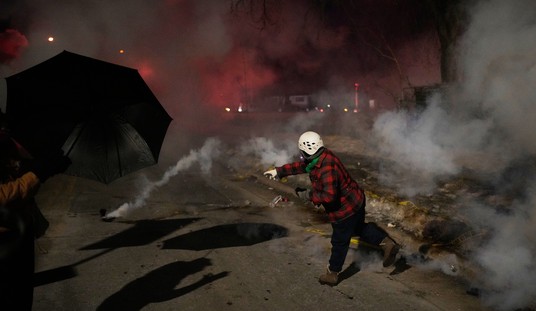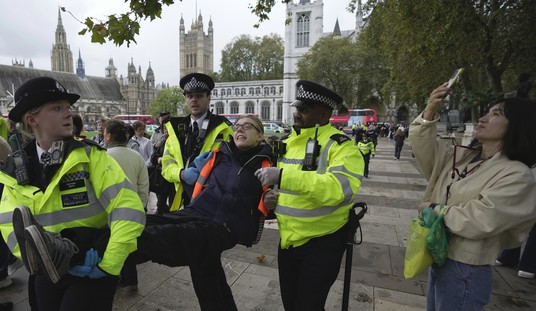Dëvar Torah — Acharei Moth/Qëdoshim (Leviticus XVI, 1 – XX, 27)
It has already been noted that the concept of qëdusha (“sanctity, holiness”) implies a separation or dedication to some higher purpose. Thus, Israel, as the nation dedicated to the actualization and propagation of Torah in the world, is called the mamlecheth kohanim vëgoy qadosh (“kingdom of kohanim and holy nation,” Exodus XIX, 6) and is subject to such restrictions as kashruth as a result (cf. Leviticus XI).
Within Israel, the descendants of Aharon, the kohanim who administer such institutions of qëdusha as the Temple, are similarly subject to restrictions — e.g. in terms of whom they may marry — over and above those that apply to Israel in general.
This manifestation of qëdusha certainly finds expression in our parasha. In order to explain why Qëdoshim follows Acharei Moth (and, as this year, the two are often read together), Rashi cites a midrash from Torath Kohanim. Acharei Moth ends with an exhaustive list of depraved practices, in particular forbidden sexual unions, against which Israel is warned, characterized as ma‘asé eretz Mitzrayim (whence they had just come) and ma‘asé eretz Këna‘an (whither they were going; cf. Leviticus XVIII, 3).
Qëdoshim begins with the command: Qëdoshim tihyu (“You will be holy,” XIX, 2), which the midrash, as Rashi phrases it, explains as meaning: “Be separate from improper relationships and from transgression, for every place you find limitation of impropriety, you find sanctity.”
The Oral Torah is shot through with expressions of this idea. Thus, in Yërushalmi Yëvamoth II, 1 we find: “Anyone who restrains himself from sexual impropriety is called holy.” Similarly, in Shëvu‘oth 18b, Rabbi Binyamin bar Yefeth declares: “Anyone who sanctifies himself during marital relations will have male children, as it is said, ‘And you shall sanctify yourselves and you will be holy’ (Leviticus XI, 44). And close to that: ‘For a woman will conceive and bear a male’ (ibid., XII, 2).” Sons who are fully occupied in Torah study and the fulfillment of its mitzvoth are born in qëdusha.
Our parasha reveals another aspect of qëdusha besides the already well-established concept of përishuth or restraint mentioned supra. A series of noble precepts enjoin Israel to be kind to the weak and respect the aged, and to refrain from bearing a grudge, from oppression, and from robbery. It culminates in the sublime declaration:
Lo’ thiqqom vëlo’ thittor eth bënei ‘ammecha vë’ahavta lëré‘acha kamocha Ani Ha-Shem.
“You will not take revenge and you will not bear a grudge against your people, and you will love your fellow like yourself; I am Ha-Shem” (ibid., XIX. 18).
This, Rabbi ‘Aqiva tells us, is the këlal gadol baTorah (“fundamental principle in the Torah,” Yërushalmi Nëdarim IX, 4) and Rashi, citing the midrash, tells us of our parasha sherov gufei Torah tëluyiim bah (“that most of the fundamental concepts of Torah are dependent on it”).
The midrash which Rashi quotes uses this eventuality to explain the highly unusual wording which introduces our parasha. In most other parashoth we find something like: Dabbér el bënei Yisra’él vë’amarta aléhem (“Speak to the bënei Yisra’él and say to them,” Leviticus I, 2) or Dabbér el bënei Yisra’él lémor (“Speak to the bënei Yisra’él to say … ”, ibid., XII, 2). But here we find Moshe commanded: Dabbér el kol ‘adath bënei Yisra’él vë’amarta aléhem (“Speak to the whole community of bënei Yisra’él and say to them … ”).
This, says the midrash, means Israel was taught the parasha bëhaqhél (“in full assembly”). This is in contradistinction to what the Talmud (‘Eiruvin 54b) tells us concerning how most of the Torah was imparted to Israel. First, Moshe would learn the parasha from the Almighty; he would then teach it to Aharon; Aharon would then be seated on Moshe’s left while his sons El‘azar and Ithamar were being taught. They would then be seated bracketing their father and uncle, and Moshe would teach the zëqénim, the first Sanhedrin. Then the zëqénim would be seated at one side and all of the rest of the people would enter to learn. They would be taught successively by the Gëdol hador (Moshe), the Kohén Gadol (Aharon), the rank-and-file kohanim (El‘azar and Ithamar) and finally by the Sanhedrin. They thus heard everything four times, from every level of the leadership.
The question, then, is why Moshe was enjoined to abandon this tried-and-true pedagogical method to teach this parasha in particular.
The Torah Tëmima explains rov gufei Torah tëluyiim bah to mean that most of the principles contained in our parasha are “belonging to the knowledge of the whole mass of people in their way of life.” While, to be sure, there are halachic norms to be considered and ample scope for inquiries of competent rabbinical authority concerning the mitzvoth of our parasha, their basic application is a matter of common decency rather than technical details, and requires simply a willing heart.
The great 16th century qabbalistic commentator Rabbi Moshe Alsheikh makes a somewhat similar observation: The parasha was taught bëhaqhél, he suggests, to emphasize that for a goy qadosh, qëdusha is not the province of the unusually pious few, but of the entire community of Israel, from the greatest to the simplest, without exception.
The implication of this is breathtaking. If the maintenance of qëdusha is equally incumbent on all, and if, as Rabbi ‘Aqiva puts it, the këlal gadol baTorah is vë’ahavta lëré‘acha kamocha, then this mitzva in particular takes center stage. But if there is anything that seems true of human nature, it is that amour propre is unlimited. How, then, is it possible to love every single Jew as unconditionally as one loves oneself?
And what is the implication of the verse’s prohibition on revenge? Does it mean that one must meekly accept the blows of others and forgo all redress? If so, what is the point of having courts?
The first hint that things may not be as they seem may be gleaned from the fact that the very Rabbi ‘Aqiva who terms this mitzva the këlal gadol baTorah also says elsewhere (Bava Mëtzi‘a 62a) chayyecha qodëmin lëchayyei chavercha (“Your life takes precedence over your comrade’s life”), i.e. the Torah does not oblige us to commit certain suicide to save another; his blood is not redder than ours. But if this is so, what of loving our fellow as ourselves? It seems that the ahava of ahavath Yisra’él may not be the same as our amour propre after all.
Another insight may be gleaned from the famous story of Hillel and the potential convert found in Shabbath 31a. The convert asked Hillel to teach him the entire Torah while standing on one foot, and Hillel replied: Ma dë‘alach sanei la ta‘beid lëchavrach – zo hi’ kol haTorah vë’iddach peirusha. Zil gëmor! (“What is hateful to you do not do to your comrade — this is the entire Torah and the rest is the commentary. Go, learn!”)
The këlal gadol, kol haTorah, then, consists in doing no harm. In the same way that no sane human being deliberately harms his own interests, so are we enjoined not to harm those of others. The first rule of love is that we must not hate.
This provides us with the link between the first half of the verse and its sublime conclusion. The Talmud (Yoma 23a) defines what the Torah means by nëqama (“revenge”) and nëtira (“grudge-bearing”) as follows: Suppose that Rë’uvén wants to borrow a tool from Shim‘on, and Shim‘on refuses to lend it. That is bad enough. But if later the shoe is on the other foot, and Shim‘on now needs to borrow something from Rë’uvén, and Rë’uvén refuses on the grounds of Shim‘on’s earlier refusal, tit-for-tat, this is called nëqama.
Now imagine the same initial scenario, in which Shim‘on refused to lend to Rë’uvén. If, when Shim‘on approaches Rë’uvén to borrow an item, Rë’uvén lends it to him, but says, “I’m not like you; when I asked you, you wouldn’t lend to me” this is called nëtira.
It will be realized that either of these conditions serves to perpetuate hard feelings and hostilities. For that reason, the Torah proscribes them, and in the same breath calls the absence of such feelings love for one’s fellow. As the Rambam points out, this has nothing to do with righting wrongs or seeking justice, save that justice must be pursued for its own sake, not out of hatred for the wrongdoer. Only thus can we come to correct the condition of sin’ath chinnam (“groundless hatred”). This, the Rabbis tell us (Yoma 9b), is responsible for the loss of the Béyth haMiqdash, the Temple, whose very name implies that it was and again will be the spiritual center of the mamlecheth kohanim vëgoy qadosh.
Vë’ahavta lëré‘acha kamocha, uqëdoshim tihyu!









Join the conversation as a VIP Member